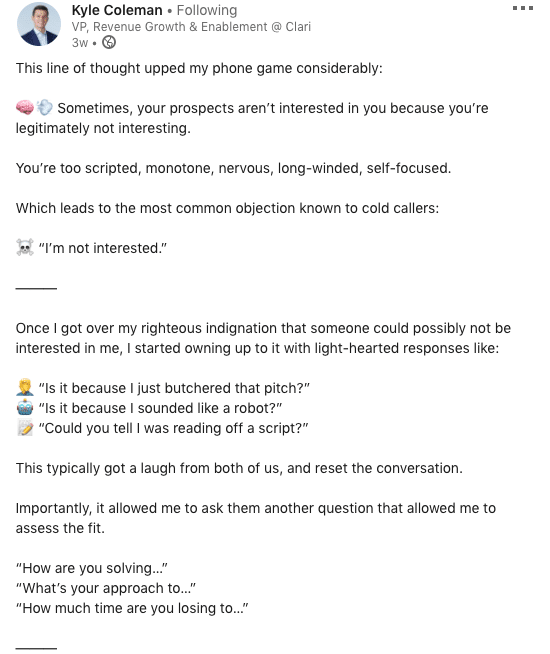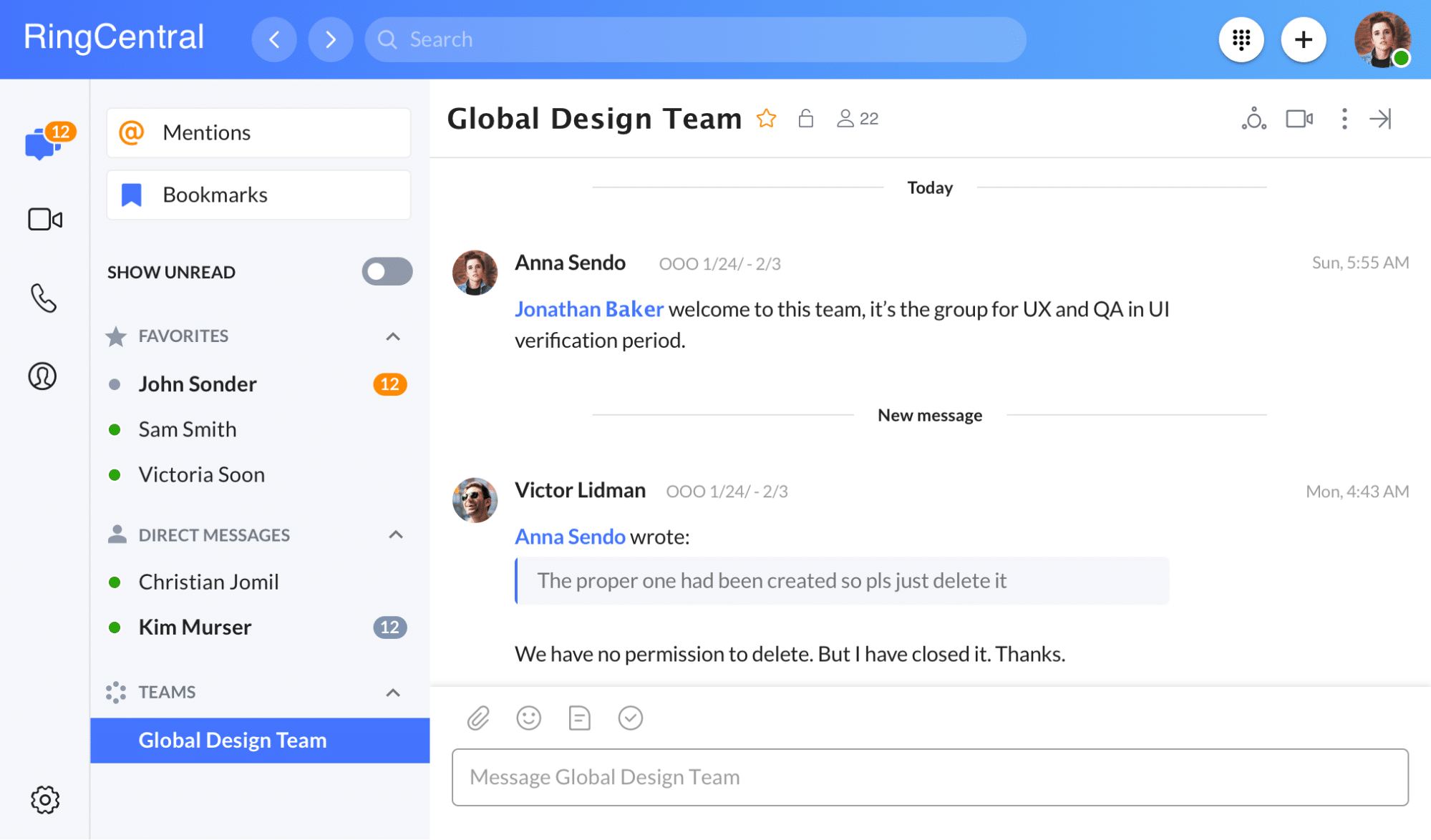Selling business to business (B2B) is a very different animal compared to selling to consumers.
Business customers are savvy, often need to get buy-in from multiple stakeholders, and require solid proof of ROI before they convert.
But B2B sales also present a huge opportunity for salespeople—winning a business sale usually results in a higher dollar value, more commission, and a longer-term commitment from customers.
If your small business sells to other businesses, a good B2B sales strategy will be a key part of your growth strategy. In this post, we’ll look at:
- What B2B sales is and what sets it apart from selling to consumers
- The challenge with B2B sales
- How the B2B sales process has evolved
- 3 big-picture B2B sales techniques for small businesses
- B2B sales examples from real companies
Up your sales game and close more deals with these free cold outreach scripts. ☎️
What is B2B sales?
B2B sales is short for business-to-business sales, and refers to any sale in which your prospect is another business. This sets it apart from business-to-consumer, or B2C sales, where your prospect is a consumer.
B2B sales encompass a wide range of products and services that all have other businesses as their target customer.
Think of business law services, marketing software, or display racks for shops. These are all very different purchases, but the customer for each one is usually another business.
The typical sales pitch, whether it’s a phone or email sales pitch, is usually pretty consistent when it comes to B2B sales: show your prospect how your product or service can help them make sales in their own business, either directly or indirectly.
The challenge with B2B selling
That consistent goal is also one of the challenges of B2B sales. Since your prospects are hearing similar sales messages all the time, they’re going to be a little more skeptical that your product will actually make a difference.
It’s not just the same sales message from your direct competitors, but from all sorts of products and services that serve business customers. That means it’s even harder to stand out.
Another potential challenge in B2B sales is that business prospects are generally tasked with doing some research before committing to a product or service.
That research can obviously be a positive thing if it leads them to find you, but it also means that they’re unlikely to commit to your product after just one good sales call. They probably have more calls and more research to do, extending the sales process for your team.
Finally, B2B products often operate at a higher sales volume and financial commitment—which can make for a longer, more in-depth sales process. You may have to speak with multiple team members at the company, or provide evidence of a measurable ROI in order to make the sale.
Now, let’s look at how to solve these challenges in your B2B sales process.
A more evolved B2B sales process
The process of closing a B2B sale used to be pretty straightforward, but the age of the internet changed all that.
Now, with the opportunity to do tons of research on every possible solution, your prospects may not be as interested in speaking to a salesperson right away. Instead, they’re probably comfortable doing quite a bit of research on their own.
The B2B sales process is no longer linear either. Instead, it looks something like this:
- Company identifies a problem, assigns someone to solve it.
- Team member opens Google.
- Team member loses hours on the internet finding different solutions to the company’s problem, asking friends and their Twitter network for suggestions and recommendations.
And after all of that Googling, there might be space for a sales conversation with the top contenders. Which might lead to a sales conversation with a manager. Which might lead to a sale.
Much like a buyer of, well, almost anything these days, B2B buyers are typically willing to put in a little digital legwork to be sure they’re getting the best product—at the best price.
Don’t be deterred, though. With the right B2B sales techniques and sales app, you’ll be able to meet your sales goals.
3 big-picture B2B sales techniques for small businesses
While there are some sales techniques and tasks that are exclusively for sales teams, when it comes to B2B sales, there are some opportunities for cross-functional collaboration that your entire company can take on.
By taking a customer-centric mindset in every department (no matter how large or small), you’ll ultimately be able to empower your sales team with the knowledge and materials they need to do their job well, confident that the rest of the team will deliver on their promises.
1. Personalize your sales pitch
In 2019, 42% of B2B buyers said that they spoke to reps from the vendor in the first month of the sales cycle, compared to 33% in 2018.4
That’s right—not only are B2B buyers still speaking with sales reps, but they’re beginning to speak to them earlier in the process, too.
But those savvy buyers have already probably researched your product—and your competitors’ products, too. Which means that the generic cold calling script of the past isn’t going to work anymore.
Instead, show the lead that you understand their company and their needs. In fact, 56% of B2B customers said that the sales team’s ability to demonstrate knowledge of their company was a factor in their purchasing decisions.5
Here’s what Clari’s VP of Revenue Growth and Enablement, Kyle Coleman, a B2B sales veteran says about the pitch:

After a sales conversation, encourage sales reps to follow up with leads and send case studies or blog posts that are directly relevant to their company, along with a note about why they’re sending this content specifically. Don’t just “touch base”—that’s a waste of an interaction when you could be providing value.
For instance, saying “I just wanted to follow up with a case study from another small business so you could see how they used the product, even as a team of three,” or “Here’s that blog post I mentioned that shows how we can schedule email sends based on the best time for your customers” shows that you’re not just doing a generic pitch—you’ve taken the time to tailor this to their company and their needs.
More personalized pitches are also a byproduct and benefit of sales territory mapping, if your company is already doing that. If your sales rep is familiar with the prospect’s local business landscape, that already gives them a leg up on your competition.
Learn more about sales demo best practices.
2. Use content marketing
The key to connecting with modern B2B buyers is content. In fact, the average B2B buyer consumes 13 pieces of content before deciding on a vendor.1
Content marketing is a way to show off the features of your product, educate leads, and showcase how you solve their problem—before you even opened up your cold calling software, and before they’re even interested in speaking to a sales rep.
The great thing about doing content marketing is that it continues to provide these benefits long after it’s first created. (It might need to be updated from time to time, but generally, the benefits are ongoing.)
And marketing content shouldn’t be used by just marketing teams either. In B2B sales, where you have typically longer sales cycles and more stakeholders involved, it’s usually helpful to be able to provide engaging, educational content for your prospects as they’re narrowing down the list of options. Just because you can’t close the deal now doesn’t mean that you’ve got nothing else to offer—truly good content is effective when it’s wielded by both marketing and sales teams.
The important factor when it comes to content marketing is showing your prospect that you understand them. According to DemandGen, 97% of B2B buyers said that it was important to them that vendor websites have relevant content that spoke directly to their company.2
But how do you speak directly to a company you may have never had a conversation with?
Use your knowledge about your user personas, as well as your past conversations with customers, to inform your content marketing calendar. Think in terms of meeting your prospects where they are, instead of just talking up your product.
As CEO of RefineLabs Chris Walker says, “Marketing teams are now teachers, not advertisers. And it starts with teaching buyers about what they care about, not force-feeding them all the stuff about your product you wish they cared about.”3
Consider frequently asked questions, common sales objections, and the kinds of companies that have purchased from you in the past. These are the materials that should be turned into marketing emails, case studies, blog posts, and social media content that’ll speak to your potential customers.
3. Align marketing and sales
The best way to create and leverage the kind of content that actually results in B2B sales? Foster a healthy line of communication between your sales and marketing departments.
We no longer live in a world where you can afford to have sales and marketing siloed—it’s absolutely crucial to align these two departments under a shared vision.
Connecting sales and marketing will make sure that the hottest leads get to the right sales reps, the content that is created is useful, and that both teams contribute to goals that drive the company.
If Marketing is just focused on bringing in “leads,” even if they’re not ready to buy, that makes things a lot harder on Sales. Not exactly what you want to see in a well-oiled, collaborative business.
Try combining your sales goals for the quarter and making them the mission of both sales and marketing—together. And when they hit them? A celebration for both teams, together.
By creating a shared goal for both sides, you’ll empower them to come together to create the most effective B2B sales funnel.
Alignment between Sales and Marketing also means that content creation is a shared task. Both teams should brainstorm content, since sales reps will have insights and ideas to contribute to the marketing department, and vice versa.
3 B2B sales examples from real companies
Enough theory—it’s time to dig into some examples from real companies to show how B2B sales can be simplified with the right techniques.
1. Be available where your prospects need to connect with you
We mentioned that prospects are becoming more interested in speaking to sales representatives early on in the sales process—but who says that conversation has to be a phone call?
Theralent, an executive search company based in Ohio, runs efficiently thanks to a small team dedicated to communicating with clients and candidates alike—and not just on phone calls.
Because they use the same phone numbers for calling and texting with candidates, they’re able to communicate efficiently, whether they’re scheduling an interview, asking a quick question, or sending a reminder.
Plus, as a team of three, using texting to stay on top of communication not only helps them work more efficiently, it also gives candidates the impression that recruiters are truly dedicated to them and always available to help.
While recruiting isn’t exactly like other kinds of B2B sales, there’s still a valuable lesson here in diversifying communication with leads.
By mixing it up and speaking with them on the phone, via text, and even over messaging, you can keep in touch in the ways best suited to their needs—without worrying about annoying them with constant calls.
How to do it:
Use a sales software or communication platform that lets your sales reps keep track of the various touchpoints that a prospect has had with your business on different communication channels. That way, anyone on your sales team can follow up with context on the last time the prospect talked to someone from your company, building on what was discussed to keep the sale moving forward. For example, here’s how RingCentral’s outbound contact center platform works for sales teams:.
2. Let prospects tell you what they want
When it comes to sales, listening is a crucial (and oft-overlooked) skill. Yet, as a customer-facing team, the sales team has the opportunity to always be listening for prospects telling them what they want.
Whether or not the prospects eventually convert, these early sales conversations can be crucial for defining your target customer and even the potential product roadmap for your company.
ProductPlan, a product roadmap software, took exactly that approach when the founders used informational interviews to test and validate the product idea that ultimately led to the company’s existence.
While you probably aren’t using interviews to validate a whole new company, you can use sales conversations with leads to learn more about what the market is looking for.
Have your sales team ask open-ended questions (bonus: it will give them a natural conversation topic so leads don’t feel like they’re always pushing the sale) to learn about customer problems and needs.
If your product can help, they’ll be in a great position to show potential customers exactly why your product is the right solution.
Even if there isn’t a direct way to serve those needs, they’ll be able to send feedback to the product team, educating your whole company on the needs of your ideal customer.
It’s especially important to encourage internal communications so that, as your company grows, it remains seamless for marketing and sales staff to communicate with developers or the product team.
3. Create content tailored to prospects
Those conversations with leads aren’t just useful for product development, though—they’re the perfect material to create content that keeps serving leads and customers.
Buffer, a social media scheduling tool, is a great example of a B2B business using content marketing to proactively answer customers’ questions, serve their needs—and, ultimately, get sales.
And something must be working, since they now have over 73,000 customers.

Taking a look at the Buffer Blog, you can practically hear the questions that prospects and customers ask their sales and marketing staff.6 For instance, “How do you create a custom audience for a social media ad?”
To make sure your content team has the resources they need to create content that not only drives traffic but also results in sales, create an open line of communication between different departments of the company.
For instance, you might have a “Blog Post Ideas” or “Customer Questions” group in your team messaging app to allow sales, support, and even product team members to share ideas, questions, and content requests with your marketing team. Here’s how we do it using the RingCentral desktop app (the perk is that we can make phone and video calls from here too):
In exchange, marketing can share completed content pieces that other teams can then easily share with prospects. That’s a win-win.
Ready to master B2B sales?
While B2B sales definitely presents certain challenges, like a longer sales cycle and more legwork to persuade multiple decision makers, a savvy sales team equipped with the right strategies can still find success and hit their goals.
By integrating content marketing into the B2B sales process, sales reps can hit their goals—and your prospects can have their problems solved more quickly.
B2B sales don’t need to be scary—with the right strategy and buy-in across the company, there are endless opportunities to provide a great sales experience that converts.
1 marketingland.com/b2b-buyers-consume-an-average-of-13-content-pieces-before-deciding-on-a-vendor-276116
2, 4, 5 demandgenreport.com/resources/research/the-2019-b2b-buyers-survey-report
3 linkedin.com/posts/chris-walker-41597028_marketing-b2b-demandgeneration-activity-6670696587435536384-Hr5P
6 buffer.com/resources/
Originally published Jun 01, 2020, updated Feb 26, 2021





